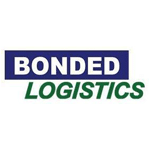Barcode Software for Inventory Management: The Ultimate Guide
Improve Efficiency and Accuracy in Your Warehouse and Supply Chain Operations Across Multiple Locations.
In the world of warehouse management, logistics, and supply chain, barcode software for inventory has become an essential tool. Barcode inventory management systems not only save time and reduce errors but also streamline various processes, ensuring smooth operations. This comprehensive guide will cover everything professionals need to know about barcode scanning systems, and the best practices for implementing them in your business, even across multiple locations.
Barcode Software: Inventory Management Efficiency
The Importance of Inventory Management
Inventory management is a critical component of successful supply chain operations. It involves tracking inventory items, stock levels, raw materials, and assets to ensure a smooth and cost-effective flow of goods. Proper inventory control eliminates waste, prevents stockouts, and helps businesses maintain accurate records.
Barcode Inventory Management: Greater Accuracy and Real-Time Data
Using barcodes for tracking inventory significantly reduces human error by eliminating manual processes and data entry. Barcodes store various characteristics tied to a product, such as product information, serial numbers, and expiration dates. Barcode scanning systems provide real-time data and access to a central database, ensuring up-to-date inventory records, which helps businesses make informed decisions.
Benefits of Barcode Inventory Management
- Reduced labor costs: Automating the process with barcode labels eliminates manual data entry, reducing the time and labor required for inventory management.
- Improved accuracy: Barcode scanning systems minimize human error, ensuring greater accuracy in inventory tracking and control.
- Faster processes: RF scanning of barcodes is quicker than manual entry, speeding up inventory transactions and physical inventory audits.
- Enhanced decision-making: Real-time inventory data allows businesses to make informed decisions regarding stock levels, order management, and purchasing.
- Centralized management for multiple locations: Barcode inventory systems enable efficient inventory management across multiple warehouse locations, providing a unified view of stock levels and allowing for better resource allocation.
The Anatomy of a Barcode System: Components and Functionality
Barcode Labels: The Foundation of an Effective Barcode System
Barcode labels store crucial inventory data, such as product information, serial numbers, lot numbers, and expiration dates. These labels can also include serial number tracking, allowing businesses to track individual items throughout the supply chain for better traceability and accountability. These labels are generated using specialized barcode software and can be printed on various materials.
Related: Organizing Your Warehouse with Labels: The Ultimate Guide
Barcode Scanners: Devices for Quick and Accurate Inventory Tracking
A barcode scanner is an essential tool for barcode inventory systems, as they read and decode the information stored in barcodes. These devices can be handheld or integrated with mobile devices, offering flexibility and convenience for users to scan barcodes quickly and efficiently. The ability to scan barcodes on-the-go or at fixed stations can dramatically improve the speed and accuracy of inventory management tasks, leading to better overall operational performance. The type of barcode scanner required will depend on the use case needed (i.e. fixed vs mobile, etc.)
Barcode Software: The Hub for Managing and Analyzing Inventory Data
Barcode software, or barcoding software, enables businesses to manage and track inventory, providing powerful features for tracking, reporting, and analyzing data regarding inventory. This software often integrates with other systems like Warehouse Management Systems, accounting software, and shipping labels, making it a comprehensive solution for inventory control. With the ability to track inventory at every stage of the supply chain, businesses can make informed decisions and optimize their operations.
Types of Barcodes: Choosing the Right Format for Your Business
There are several types of barcodes, each with its unique features and applications. Some common barcode formats include:
- UPC (Universal Product Code): Widely used for retail products and point-of-sale (POS) systems.
- EAN (European Article Number): Similar to UPC, used primarily in European countries.
- Code 128: A versatile, high-density barcode used for various applications, including inventory management and shipping labels.
- QR Codes (Quick Response Codes): A QR code is a two-dimensional barcode that can store more data than linear barcodes, often used for marketing and asset tracking purposes.
Implementing a Barcode Inventory System: Planning and Deployment
Assessing Your Business Needs
Before investing in a barcode inventory system, it’s crucial to assess your business needs and determine which features are essential for your operations. Consider the size of your business, the complexity of your inventory, the level of integration required with other systems, and the types of barcodes suitable for your needs. Small businesses may have different requirements than larger enterprises, so it’s important to choose a system that caters to your specific needs.
Hardware Selection: Barcode Scanners and Printers
Selecting the right hardware for your barcode inventory system is essential for its success. Consider factors such as scanner range, compatibility with your chosen barcode format, durability, and connectivity options when choosing a barcode scanner. When selecting barcode printers, evaluate print resolution, volume of labels, label material compatibility, and printing speed to ensure the best fit for your business. Additionally, ensure that your chosen inventory software is compatible with your hardware selections to create a cohesive and efficient system.
Barcode Software Selection
Research and compare different barcode software solutions to identify the best fit for your specific needs. Ensure that the software you choose is compatible with your barcode scanners, printers, mobile devices, and existing systems like POS or inventory management software. Great software solutions will also offer cloud-based storage and real-time access to data about inventory.
Staff Training and Change Management
Proper training is essential for the successful implementation of a barcode inventory system. Ensure that your staff understands how to use their barcode scanner, mobile devices, and the barcode software effectively. Additionally, manage the transition to a barcode inventory system by addressing concerns, soliciting feedback, and providing ongoing support to your team.
Cadre Technologies: A Comprehensive Solution for Barcode Inventory Management
Warehouse Management Software (WMS) by Cadre Technologies
Cadre Technologies offers a robust Warehouse Management Software (WMS) solution, designed to streamline inventory management and improve overall warehouse efficiency. With advanced features like barcode-enabled inventory management, order processing, and real-time reporting, Cadre Technologies’ WMS provides a comprehensive solution for businesses in the warehouse, logistics, and supply chain industries.
Key Features of Cadre Technologies’ WMS
- Barcode software for inventory integration: Seamlessly integrate barcode software with your inventory management system for accurate and efficient tracking.
- Mobile device support: Utilize mobile devices with a barcode scanner to enhance flexibility and efficiency in inventory management.
- Scalability: Cadre Technologies’ WMS is designed to grow with your business, accommodating changing needs and requirements.
- Integration with other systems: Integrate with accounting software like QuickBooks, order management systems, and shipping label solutions for a cohesive, end-to-end solution.
Best Practices for Barcode Inventory System Implementation and Maintenance
- Regular Physical Inventory Audits: Even with a barcode inventory system in place, it’s essential to physically conduct regular inventory audits to maintain accurate stock levels and prevent discrepancies.
- Monitor and Analyze Inventory Data: Utilize the powerful features of your barcode software to analyze data about inventory regularly. Monitoring stock levels, inventory levels, sales orders, and purchase orders will help you make informed decisions and improve overall inventory control.
- Optimize Label Design and Printing: Create a consistent label design system for your barcodes, ensuring that they are easy to read and scan. Consider factors like label size, color, and the type of barcode when designing your labels. Use your barcode software to create labels that meet your specific needs and requirements. Maintain your barcode printers to ensure optimal performance and prevent downtime, and always use high-quality materials for printing labels to ensure accurate scanning and durability.
- Embrace Continuous Improvement: Regularly review your barcode inventory system’s performance and identify areas for improvement. Stay informed about advancements in barcode technology and consider implementing new features or updates as they become available.
- Utilize RF Scanning Technology: To further enhance the accuracy and efficiency of your barcode inventory management system, consider incorporating radio-frequency (RF) scanning technology. RF scanners allow for faster data transmission and real-time updates to your inventory management software, providing a more efficient and accurate system for managing your warehouse operations.
- Integration with Warehouse Management Systems (WMS): Integrating your barcode inventory management software with a comprehensive WMS can help streamline your warehouse operations and improve efficiency across multiple locations. A WMS will enable you to automate processes, manage resources more effectively, and optimize your supply chain operations.
- Standardize Barcode Characteristics: When implementing a barcode inventory system, it is essential to standardize the characteristics tied to each barcode. This may include product information, serial numbers, and expiration dates. Standardizing these characteristics ensures consistency in data collection and management, allowing your barcode inventory system to function more effectively.
- Regularly Update Barcode Labeling Practices: As your business grows and evolves, it’s essential to keep your barcode labeling practices up to date. This may involve updating your barcode formats, incorporating new technologies, or adapting your labeling practices to meet changing industry standards.
Conclusion
Implementing a barcode inventory system is a significant step toward improving efficiency and accuracy in your warehouse, logistics, and supply chain operations. By understanding the various components of a barcode system, choosing the right software and hardware solutions, and following best practices, your business will benefit from streamlined inventory management, reduced human error, and valuable time savings.
Cadre Technologies’ Warehouse Management Software offers a comprehensive solution for businesses looking to optimize their inventory management processes and stay ahead in the competitive world of warehousing and supply chain management. By incorporating the latest barcode technology, RF scanning, and integration with WMS, Cadre Technologies provides a powerful and flexible solution for businesses of all sizes.













